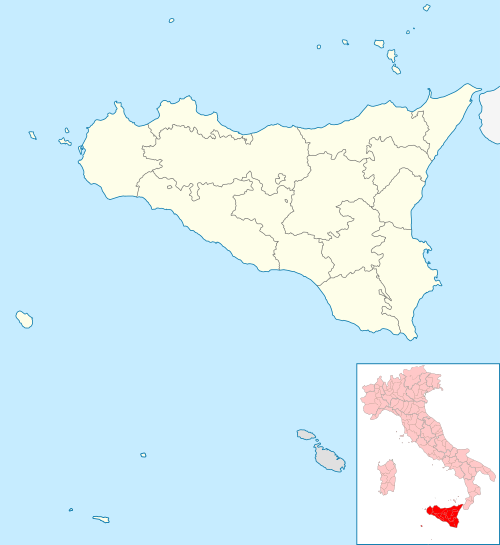Giuliana, Sicily
Until 1185, on the mountain where the village is now, stood a farmhouse, which belonged to the "gens Julia" (hence the name). Just that year the Emperor William the Good gave him, along with other houses, to the bishop of Monreale.
History of the country
Giuliana | |
|---|---|
| Comune di Giuliana | |
Location of Giuliana 
| |
 Giuliana Location of Giuliana in Italy  Giuliana Giuliana (Sicily) | |
| Coordinates: 37°40′N 13°14′E | |
| Country | Italy |
| Region | Sicily |
| Metropolitan city | Palermo (PA) |
| Area | |
| • Total | 24.2 km2 (9.3 sq mi) |
| Population (Dec. 2004)[2] | |
| • Total | 2,234 |
| • Density | 92/km2 (240/sq mi) |
| Time zone | UTC+1 (CET) |
| • Summer (DST) | UTC+2 (CEST) |
| Postal code | 90030 |
| Dialing code | 091 |
| Website | Official website |

Its urban identity, however, develops from the FOURTEENTH century, when Giuliana was before the Ventimiglia and then the Peralta. In 1543, Emperor Charles V elevated the town to the rank of Marquisate. In 1640 the country passed from the Cordona to the Gioeni, until 1812, when the feudal system was abolished. With the historical re-enactment of the "Status Julianae" on August 3, 1997, the entire Giuliana community tried to regain possession of its memory, reviving the solemn ceremony which, in 1543, elevated it from county to Marquisate. «Paradigm of the event-says the historian Giuliana Antonino Giuseppe Marchese-was undoubtedly the castle Federiciano, just finished restoring, albeit partially, by the Superintendency of the B
Giuliana (Italian: [dʒuˈljaːna]) is a comune (municipality) in the Metropolitan City of Palermo in the Italian region Sicily, located about 50 kilometres (31 mi) south of Palermo. As of 31 December 2004, it had a population of 2,234 and an area of 24.2 square kilometres (9.3 sq mi).[3]
Giuliana borders the following municipalities: Bisacquino, Caltabellotta, Chiusa Sclafani, Contessa Entellina, Sambuca di Sicilia.
Demographic evolution

References
- "Superficie di Comuni Province e Regioni italiane al 9 ottobre 2011". Istat. Retrieved 16 March 2019.
- "Popolazione Residente al 1° Gennaio 2018". Istat. Retrieved 16 March 2019.
- All demographics and other statistics: Italian statistical institute Istat.